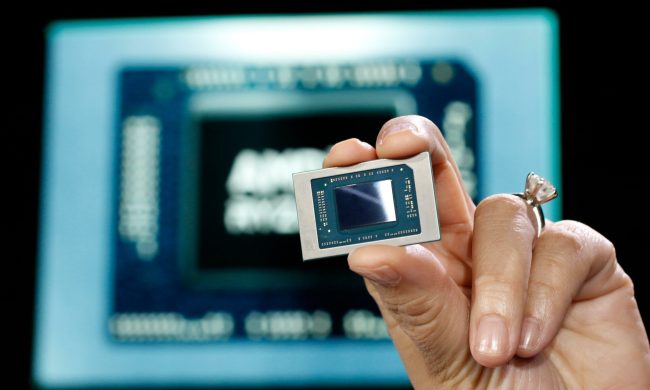After more than two years, AMD is updating its high-end desktop (HEDT) platform with the release of Threadripper 5000 Pro. The new workstation-class chips are built using the same architecture as AMD’s Ryzen 5000 processors, and the company says they’re up to twice as fast as the competition from Intel in tasks like 3D rendering.
The most significant change compared to last-gen’s Threadripper 3000 Pro chips is the Zen 3 architecture. We’ve seen the power of this architecture at work in processors like the Ryzen 9 5950X, which itself can outclass low-end Threadripper 3000 chips.

For specs, Threadripper 5000 Pro looks a lot like the previous generation. The top chip comes with 64 cores, and every chip can draw up to 280 watts of power. Outside of the new architecture, which AMD says brings a significant single-core improvement, the new range features slightly higher clock speeds and a new cache cluster that gives more cores access to a larger shared cache.
AMD says these changes bring a massive improvement over Intel’s competing Xeon W-series processors. You can see some of AMD’s benchmarks in content creation tasks below.

As usual, we recommend waiting until third-party benchmarks are available before judging performance. These numbers are hardly surprising, though. We’ve known about Threadripper 5000 for almost a year, and in that time leaked benchmarks have shown what AMD’s new generation is capable of.
Originally, rumors pointed to AMD launching the new chips in August 2021, but they were reportedly delayed to later in the year before being delayed again to the beginning of 2022. Rumors pointed to a Threadripper 5000 launch in late 2021 and a Threadripper Pro launch in early 2022, but it seems AMD went straight to the Pro series.
For months, leakers have confirmed the March 8 launch date. We expected to hear more at CES 2022, but it seems AMD wanted to stagger the launch of its next-gen workstation CPUs.
AMD’s numbers are impressive, but they’re what we expected. Team Red has made major inroads in desktop PCs and the data center, with internet infrastructure companies like Cloudflare choosing AMD over Intel. Threadripper chips provide core counts that only dual-socket Xeon systems can manage, which make them an attractive option for professionals who need something between a desktop and a full-on server. And according to AMD, one Threadripper CPU can still outclass two Xeon CPUs.

Outside of raw core count, AMD says it worked with software designers to optimize applications for Threadripper Pro. In Adobe After Effects, for example, encoding and multiframe rendering can take advantage of multiple threads at once.
AMD is top of mind when it comes to HEDT, and Threadripper 5000 Pro looks to further that. However, we don’t know what’s coming from Intel yet. Intel CEO Pat Gelsinger has insisted that AMD’s lead will be over with the release of Alder Lake and the company’s workstation-class Sapphire Rapids processors.
Intel announced Sapphire Rapids at Computex 2021, but like AMD, it seems Intel has internally delayed them several times. These chips will be inside the Aurora supercomputer at Argonne National Laboratory, but we still don’t know what that means for the HEDT crowd or how Intel will stack up to AMD.
For now, it seems AMD wants to further its lead. The company said Threadripper 5000 Pro chips will show up first in the Lenovo P620, which was the only machine to receive Threadripper 3000 Pro processors. AMD says it’s just the first machine, so we should see more Threadripper Pro workstations throughout 2022.




